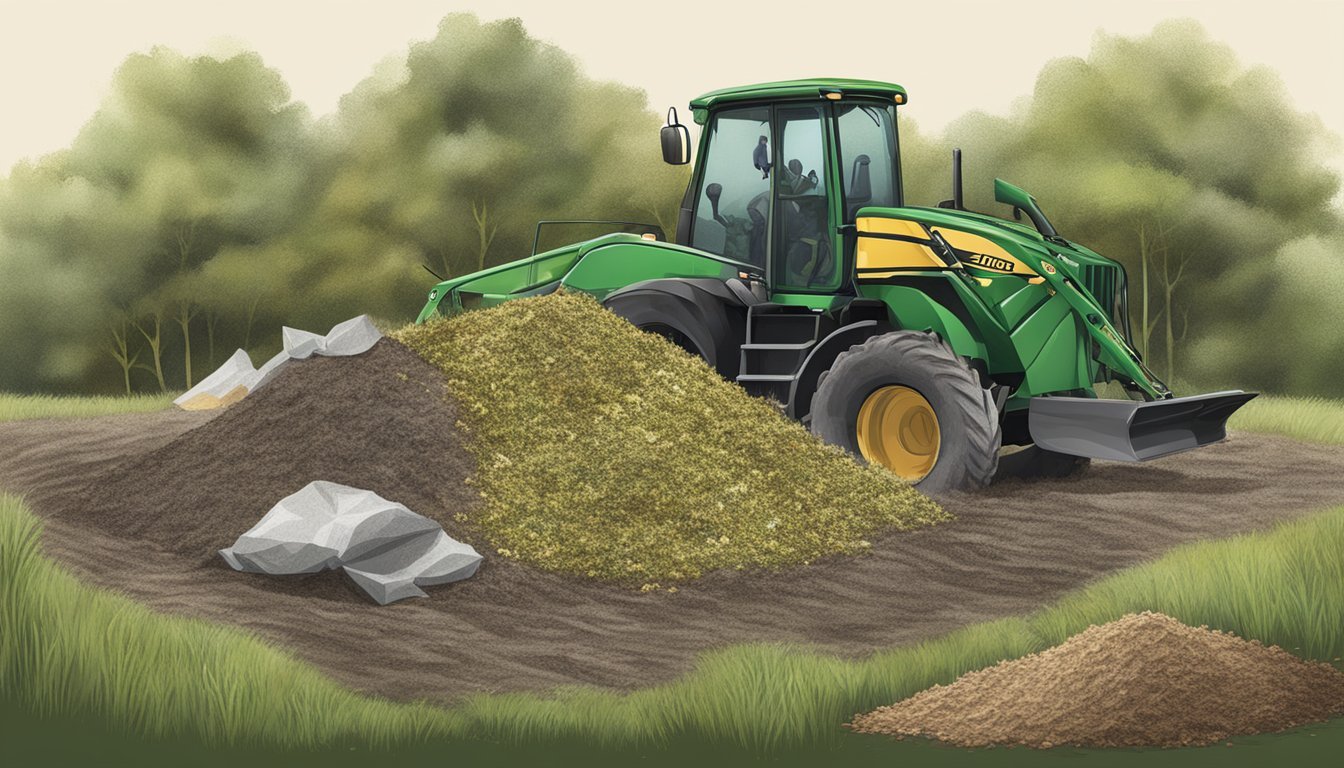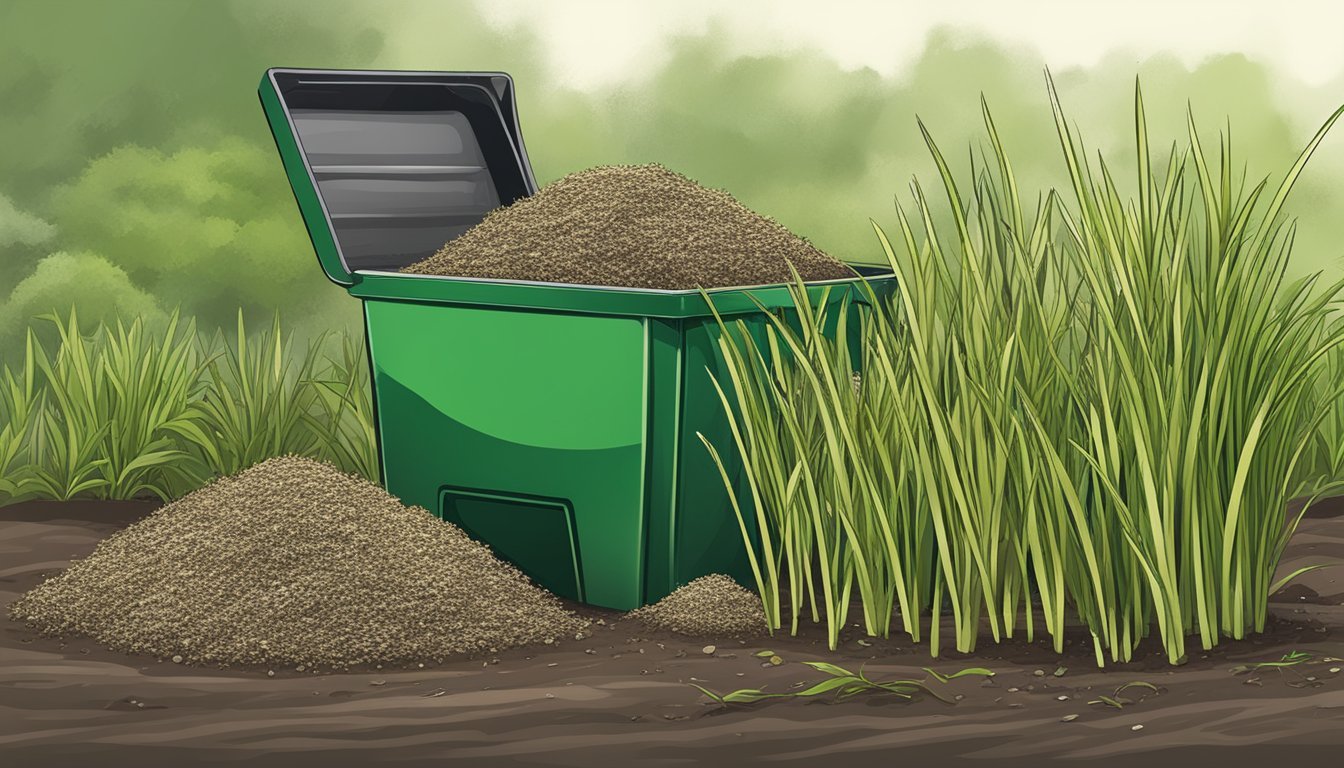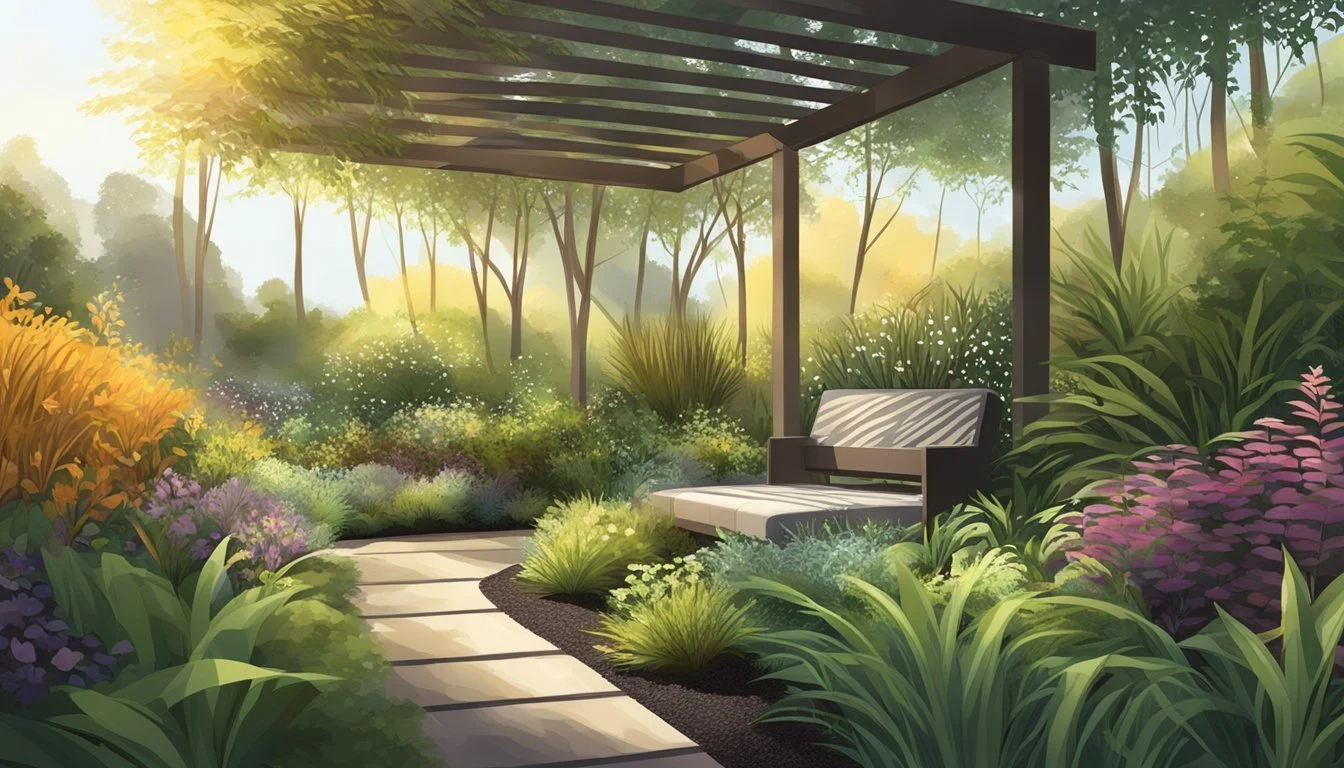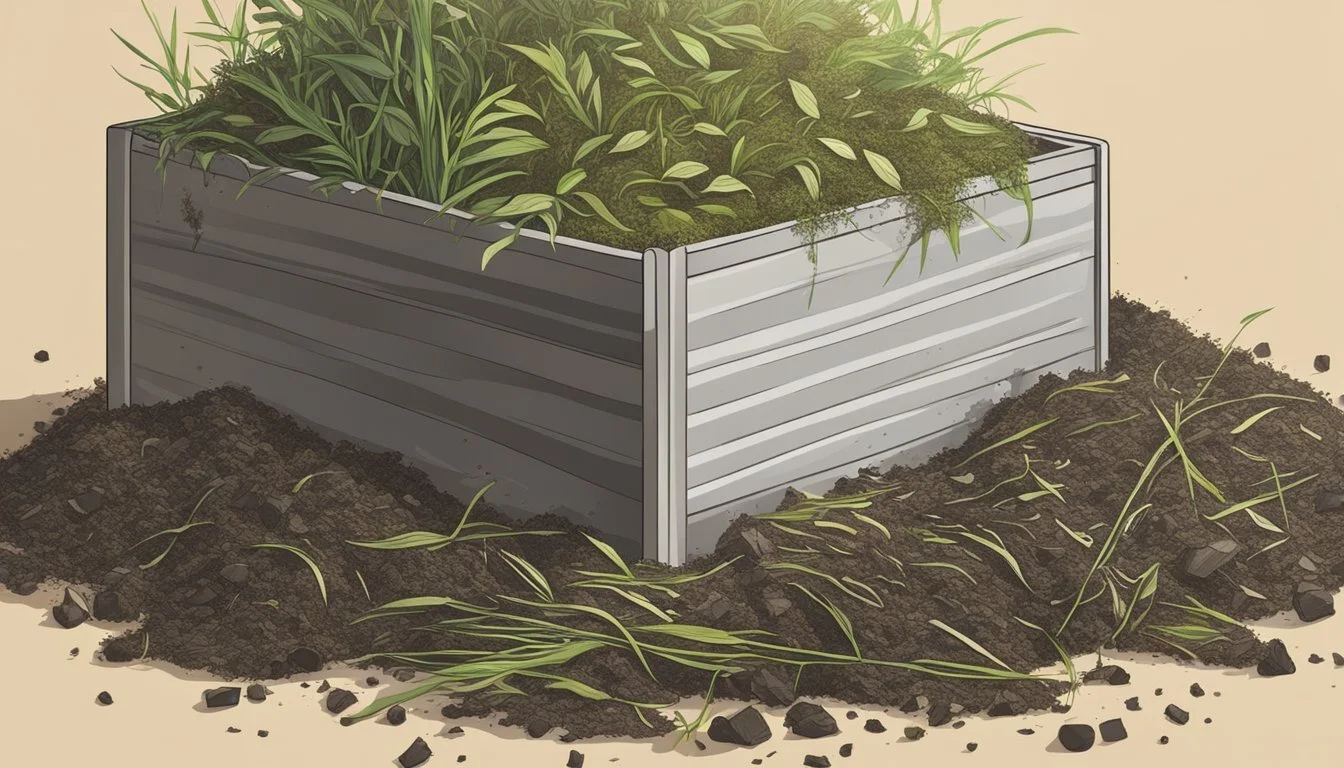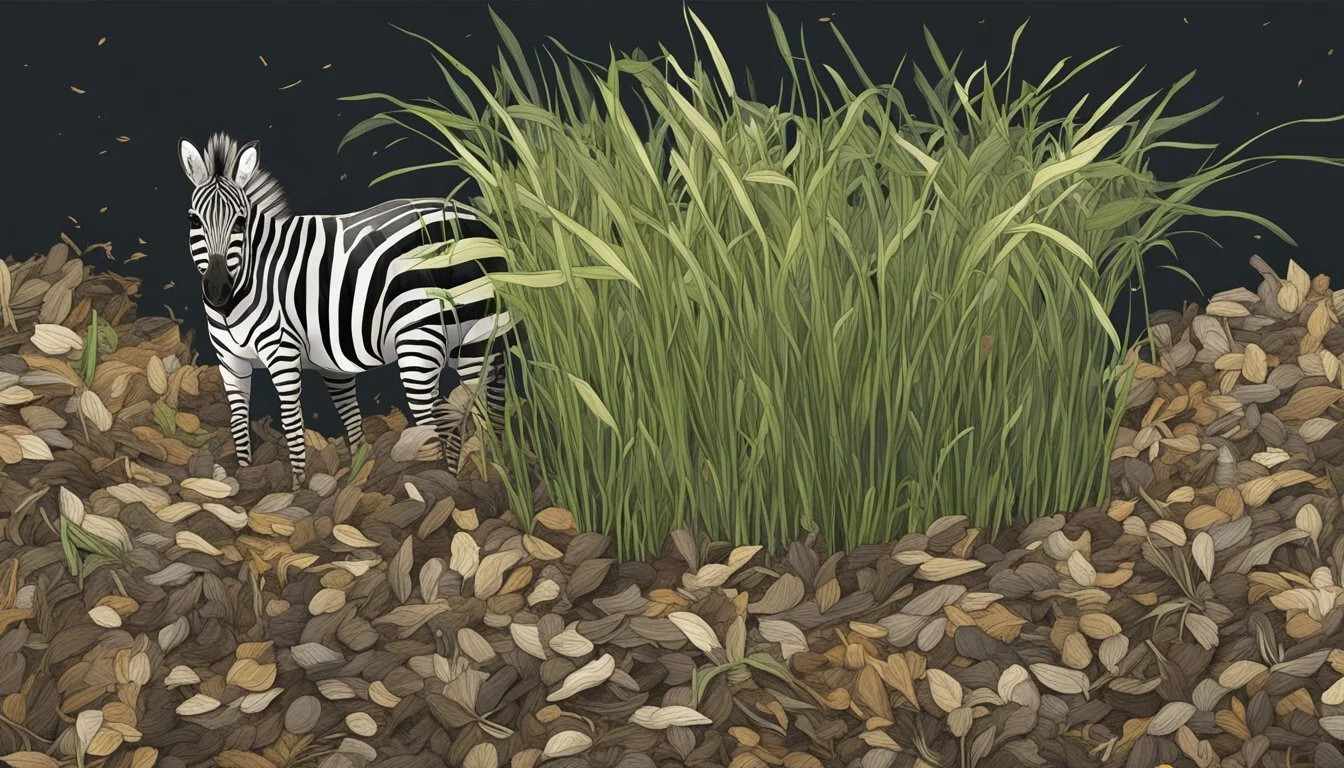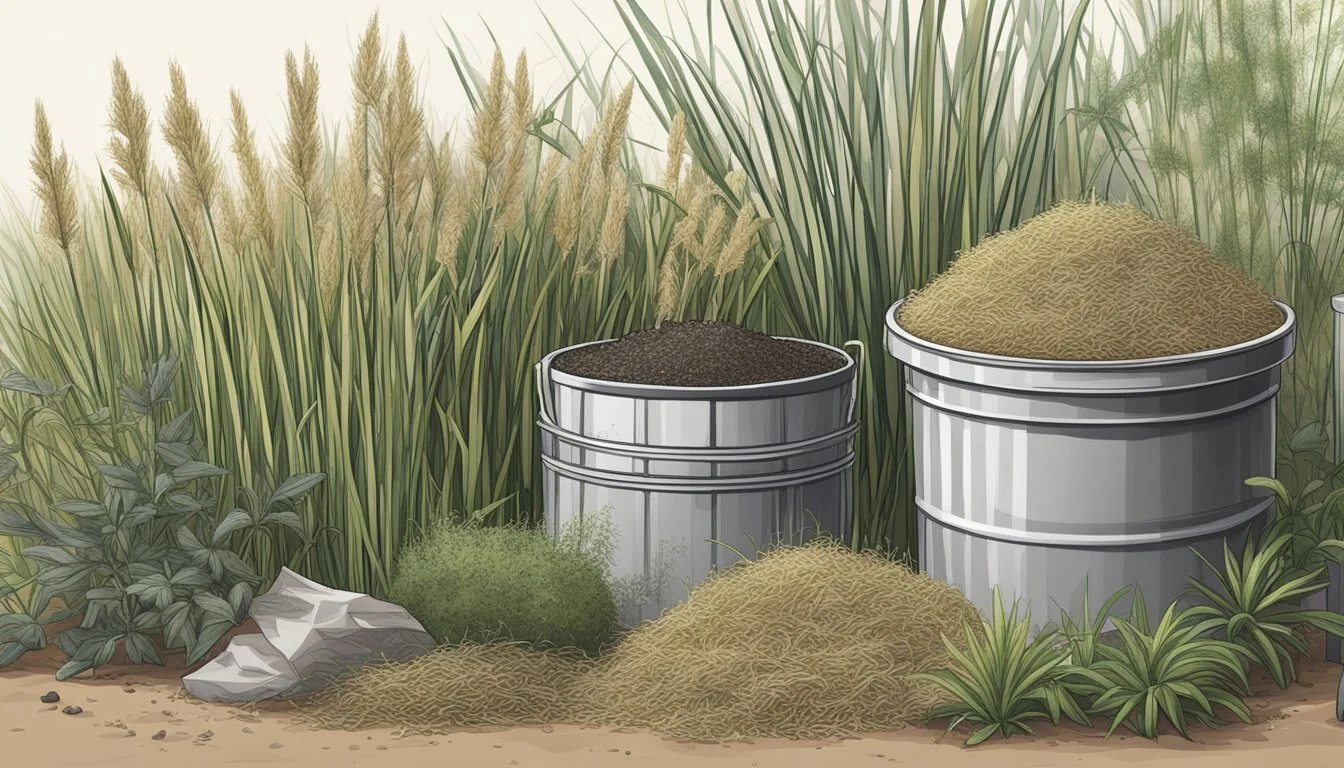Can You Compost Zebra Grass?
Understanding Its Impact on Composting Processes
Zebra grass, known scientifically as Miscanthus sinensis 'Zebrinus', is a popular ornamental grass valued for its striking green foliage with horizontal cream or yellow bands. It offers a visual appeal throughout the growing season and even into winter. As gardeners look for sustainable practices to maintain their landscapes, composting has become an essential component of a healthy garden ecosystem. Composting is the process of breaking down organic matter into a nutrient-rich material that benefits soil health and plant growth.
Compost made from garden waste is a cost-effective and environmentally friendly way to boost soil fertility. Zebra grass clippings can be a suitable addition to compost piles, as they are organic material and can decompose over time. The process of composting zebra grass is similar to composting other garden waste, where the material breaks down and contributes to the creation of humus, a complex organic substance that is important for soil health.
While incorporating zebra grass into the compost heap, it is crucial to balance it with other compostable materials. A healthy compost pile requires a mix of 'green' high-nitrogen materials and 'brown' high-carbon materials. Zebra grass, which is typically dry and high in carbon when cut, should be balanced with green materials such as vegetable scraps or fresh lawn clippings to ensure efficient decomposition. Additionally, proper aeration, moisture, and particle size can be managed to optimize the composting process and eventually produce a robust amendment for garden beds or landscaping featuring ornamental grasses and other plantings.
Understanding Zebra Grass
Zebra Grass, scientifically known as Miscanthus sinensis 'Zebrinus', is a perennial ornamental grass appreciated for its variegated foliage, which adds a bold texture to gardens.
Biology and Identification
Zebra Grass is part of the Miscanthus genus, often referred to as maiden grass. It can be identified by its striking striped foliage which resembles the coat of a zebra. Its leaves are long and narrow, exhibiting alternating bands of green and creamy yellow or white. During the late summer to fall, it produces small, tassel-like flowers that enhance its visual appeal.
Scientific Name: Miscanthus sinensis 'Zebrinus'
Common Names: Zebra Grass, Japanese Silver Grass, Porcupine Grass
Leaf Description: Bands of green and yellow/white
Flower: Small, tassel-like, silver to pinkish in color
Growth Habit and Conditions
Zebra Grass thrives in full sun to partial shade and prefers moist, well-drained soil. It is winter hardy in USDA zones 5 to 9, making it suitable for cultivation in a variety of climates.
Sunlight: Full sun to partial shade
Soil: Moist, well-drained
USDA Zones: 5 - 9
Height: Up to 8 feet tall
Spacing: Plants should be spaced 36 to 48 inches apart
This grass’s growth habit is upright with a slight arch, and it creates an attractive vertical element in landscapes. It's also known for its resilience, being able to withstand short periods of drought once established.
Optimal Growing Conditions
To thrive, zebra grass (Miscanthus sinensis 'Zebrinus') requires specific environmental conditions which include adequate light, suitable soil, and proper hydration.
Light Requirements
Zebra grass prefers full sun to develop its full variegation and achieve maximum growth potential. It should receive at least 6 hours of direct sunlight daily. While it can tolerate some shade, insufficient light may lead to less vigorous growth and reduced striping on its foliage.
Soil Preferences
The ideal soil for zebra grass is a well-draining loam that retains moisture yet avoids water logging. This ornamental grass tolerates a range of soil types, including sand and clay, but it thrives in soils that are slightly acidic. Incorporating organic matter can improve soil structure and nutrient content.
Sand soils should have organic matter added for improved moisture retention.
Clay soils may require amendments such as compost to enhance drainage.
The pH level should ideally be between 5.5 and 6.5.
Moisture and Watering
While zebra grass is somewhat drought-tolerant once established, it performs best in moist soils. Regular watering is essential during the establishment phase and during prolonged periods of dry weather.
Water deeply to encourage deep root development.
Ensure consistent moisture but avoid overwatering to prevent root rot.
By providing zebra grass with full sun, the correct soil conditions, and adequate moisture, it becomes a resilient and attractive feature in the garden, showcasing the full extent of its variegated foliage and robust growth.
Zebra Grass in Landscaping
Zebra Grass, scientifically known as Miscanthus sinensis 'Zebrinus', is widely appreciated for its aesthetic appeal in landscaping. They act as a standout specimen plant and contribute to various design styles, from city gardens to cottage landscapes.
Decorative Uses
Zebra Grass is an ornamental grass that offers a striking appearance with its variegated stripes across each blade, resembling a zebra's pattern. It serves effectively as a:
Visual Accent: Its vertical growth pattern, reaching heights of up to eight feet, makes it a focal point in any garden setting.
Hedge: When planted in a row, it can form a dense, tall hedge, providing privacy and a windbreak.
Borders: Its contrasting foliage complements flowering plants or shrubs when used in garden borders.
Containers: Smaller varieties can thrive in containers, adding movement and texture to patio or balcony gardens.
Companion Planting
In companion planting, Zebra Grass performs well alongside plants that share similar growing conditions. Key pairings include:
Perennials and Shrubs: Pair with perennials like Sedum or Echinacea, or with shrubs such as hydrangeas for a layered landscape effect.
Cottage Gardens: Incorporate into traditional cottage gardens with other ornamentals like lavender and roses for a rustic, charming appeal.
By utilizing Zebra Grass in these versatile ways, landscapers and gardeners can introduce an element of structural elegance and year-round interest in various garden settings.
Propagation and Planting
Zebra grass, a perennial ornamental grass, thrives when propagated through seeds or division. With the right techniques, gardeners can ensure healthy growth and prevent common issues like root rot.
Seed and Division
In the spring, Miscanthus sinensis 'Zebrinus' can be propagated from seed or by division. Seeds should be sowed in well-draining soil and spaced appropriately to allow for adequate growth. Gardeners typically see seedlings emerge within 10 to 21 days. However, the more common method involves dividing mature clumps in the spring. This is best done every few years to maintain plant health.
Seeds:
Sow in spring or autumn.
Maintain moist soil conditions.
Division:
Divide in spring.
Separate clumps into smaller sections.
Transplanting Tips
When transplanting zebra grass, gardeners should handle the root system with care. Transplanting is best performed in cool weather to reduce stress on the plant. Ensure that the new location has ample space for growth and the soil type matches the plant's needs - neutral to slightly acidic. Providing sufficient water and avoiding overcrowding are crucial to prevent issues like root rot.
Before Transplanting:
Choose cool weather, preferably spring or autumn.
Prepare a large enough space.
After Transplanting:
Water adequately but not excessively.
Monitor for signs of stress.
Care and Maintenance
Effective care and maintenance of zebra grass ensure its health and vigor throughout the growing seasons. This section delves into the specific practices of pruning, fertilization, and pest and disease management.
Pruning and Trimming
Zebra grass benefits from annual pruning to maintain its shape and encourage new growth. It's best to prune in late winter before new shoots appear. One should cut back the grass to about 4 to 6 inches above the ground using sharp shears. This allows for a fresh start in the spring.
Feeding and Fertilization
To support robust growth, zebra grass requires fertilization once a year. An application of a balanced, organic plant food at the beginning of the growing season can promote healthful vigor. Ensuring the application of fertilizer is done in accordance with the manufacturer's directions will facilitate optimal absorption by the plant.
Pest and Disease Management
Zebra grass is generally resistant to pests and diseases. However, issues like powdery mildew and fungi can arise in conditions where there is poor air circulation. To minimize such risks, it is important to space plants properly during initial planting. In case chewing insects are observed, they should be managed with appropriate organic or chemical controls as necessary, always following safety guidelines for application. To prevent drought stress, which can weaken the plant and make it more susceptible to pests and diseases, it is essential to provide adequate water, especially during extended periods of low rainfall.
Composting Zebra Grass
Composting zebra grass is an effective way to recycle the plant's foliage and stalks while providing valuable nutrients to garden soil. When composting zebra grass, it's important to shred or cut the material into smaller pieces to accelerate decomposition. The stalks of zebra grass can be quite tough, so cutting them into segments is recommended.
For proper composting, gardeners should maintain a balanced mix of browns (carbon-rich materials) and greens (nitrogen-rich materials). Zebra grass is considered a brown compost matter which means it should be paired with green materials like fruit and vegetable scraps.
Here is a simple guide for composting zebra grass:
Cutting: Trim and chop the zebra grass into small pieces
Layering: Alternate layers of zebra grass with green waste in the compost pile
Moisture: Keep the compost moist, but not wet
Aeration: Turn the pile regularly to introduce oxygen needed for decomposition
Damaged foliage from zebra grass can also be composted. However, one must ensure that no diseased plants or seed heads that could sprout are added to the compost.
Lastly, composted zebra grass can eventually serve as mulch to suppress weeds and retain soil moisture. The process turns garden waste into a resource, closing the loop in a sustainable gardening practice.
Environmental Considerations
When composting zebra grass, one should be mindful of its invasiveness as well as the implementation of sustainability practices to mitigate environmental impacts.
Invasiveness and Control
Zebra grass (Miscanthus sinensis 'Zebrinus'), a member of the Poaceae family, is known for its vigorous growth and spread. Although not invasive in every region, in certain hardiness zones it may escape cultivation and outcompete native species.
Invasive: In some areas, zebra grass has the potential to become invasive due to its high adaptability.
Control: During dormancy, gardeners can prevent unwanted spread by cutting back the grass to rejuvenate growth and reduce seeding.
Sustainability Practices
Incorporating zebra grass into compost and utilizing it as mulch aligns with sustainability practices that aim to reduce environmental impact.
Compost: Adding cut zebra grass to a compost pile can return valuable nutrients to the soil, enriching garden beds sustainably.
Mulch: When used as mulch, zebra grass clippings decompose, enhancing soil structure and water retention, and providing insulation against temperature extremes.
Seasonal Care
Proper seasonal care ensures that zebra grass thrives throughout the year, adapting to varying temperatures and moisture levels.
Spring and Summer Care
In spring, zebra grass emerges from dormancy and requires attention to kick-start its growth. It's crucial to provide regular irrigation as the temperatures climb, keeping the soil consistently moist but not waterlogged. As summer approaches, zebra grass benefits from:
Additional watering to combat higher temperatures and evaporation rates.
Mulching to maintain soil moisture and temperature, applied around the base without touching the stems.
During late summer, zebra grass may require extra water during extended hot or dry spells. Monitoring moisture levels closely ensures the grass doesn't dry out.
Autumn and Winter Preparation
In autumn, zebra grass begins to prepare for dormancy. This season calls for a reduction in watering as natural rainfall typically increases and evaporation rates decrease. Key considerations include:
Reduced irrigation, adjusting schedules to match cooler temperatures and increased precipitation.
Preparing for frost, ensuring that the grass has ample time to harden off before the first freeze.
By late fall, zebra grass should be well-established and ready to face the winter months with little to no additional water unless there is uncharacteristically dry weather. As temperatures drop, the plant's growth slows, and it enters a state of dormancy, requiring minimal care.
Zebra Grass Varieties and Cultivars
Zebra grass, a popular ornamental plant known for its striking foliage, is a cultivar of Miscanthus sinensis, commonly referred to as Chinese silver grass or Japanese silver grass. Cultivars of this species boast a range of colors, habits, and sizes, making them versatile for landscape use.
One well-known variety is Miscanthus sinensis 'Zebrinus', often called zebra grass, characterized by horizontal stripes on its leaves, which give it a zebra-like appearance. Another is Miscanthus sinensis 'Strictus', similar in appearance but tends to have a more upright growth habit.
Here is a brief overview of some notable cultivars:
Adagio: A dwarf variety reaching 3 to 4 feet in height, with fine foliage and silver-pink flowers.
Gracillimus: Known for its graceful, arching form and narrower leaves, this cultivar grows up to 6 to 8 feet tall.
Highlighting Unique Features:
Silberfeder: Offers silver plumes of flowers that can catch the light beautifully, hence the name "Silver Feather."
Flamingo: Distinguished by its pinkish flower plumes that resemble flamingoes.
Table Summary:
Cultivar Height Notable Features Adagio 3-4 feet Dwarf, pinkish flowers Gracillimus 6-8 feet Graceful, arching habit Silberfeder 6-7 feet Silver flower plumes Flamingo 4-5 feet Pink flower plumes
Another aspect to note is that some cultivars possess golden leaves that transition to beautiful bronze in fall. The "Strictus" cultivar is particularly valued for its robustness and distinct variegation, providing a unique textural complement to garden landscapes.
It's important to consider that while these cultivars are highly decorative, they should be planted with care, as Miscanthus sinensis can become invasive in some regions. Gardeners should consult local guidelines before planting.

